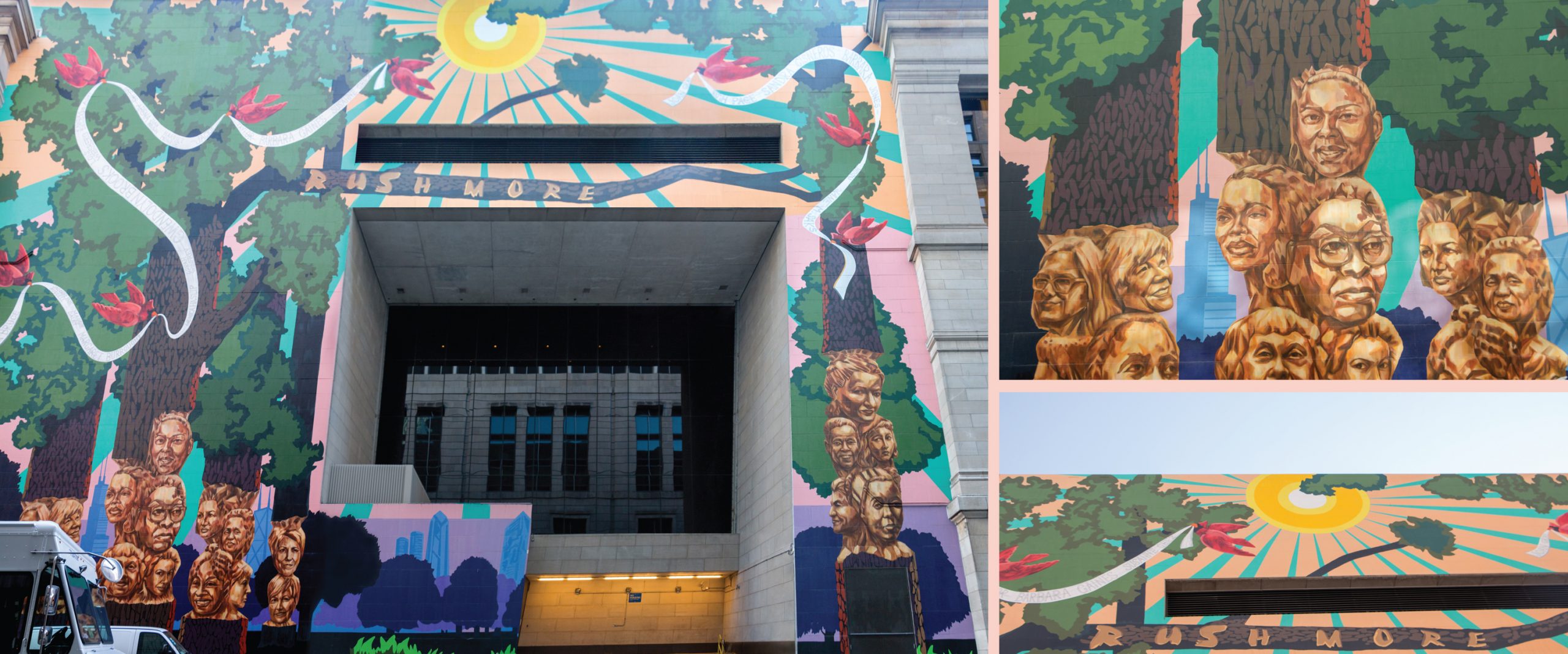Murals are an important part of Chicago public art. A very accessible art form, murals appear in every neighborhood in Chicago—a uniting factor in a city greatly divided by race and class. Interactions between artists and the public, murals can be anything from strikingly political to simply beautiful.

Popularized in 1894 by the World’s Columbian Exposition, murals were an important part of the Works Progress Administration’s Federal Art Project. The WPA supported artists around the country during the Great Depression. A public art revival in the 1960s cemented murals’ continued presence in Chicago’s public art.
The Great Ideas campaign and murals share several goals. They reach broad audiences, are often collaborative, inspire, and bring art to where the people are.
Wall of Respect
In 1967, the Organization of Black American Culture (OBAC) Visual Artists Workshop designed and produced the Wall of Respect, a mural at 43rd and Langley in Chicago’s Bronzeville neighborhood. Created at the height of the Black Power Movement, the Wall celebrated Black heroes and heroines in music, art, literature, politics, and sports. Destroyed by a fire in 1971, the Wall was an important symbol of activism, demonstration, resistance, and socialization, both in Chicago and around the country.
Who would you include on a 2020 version of the Wall of Respect and why? How do you think Chicagoans would respond to a Wall of Respect today?




